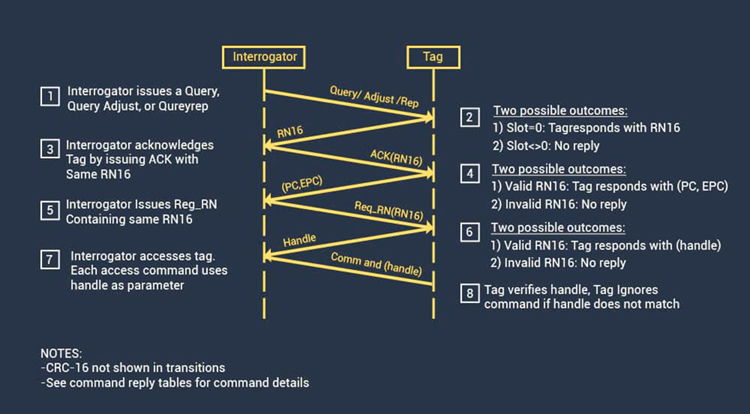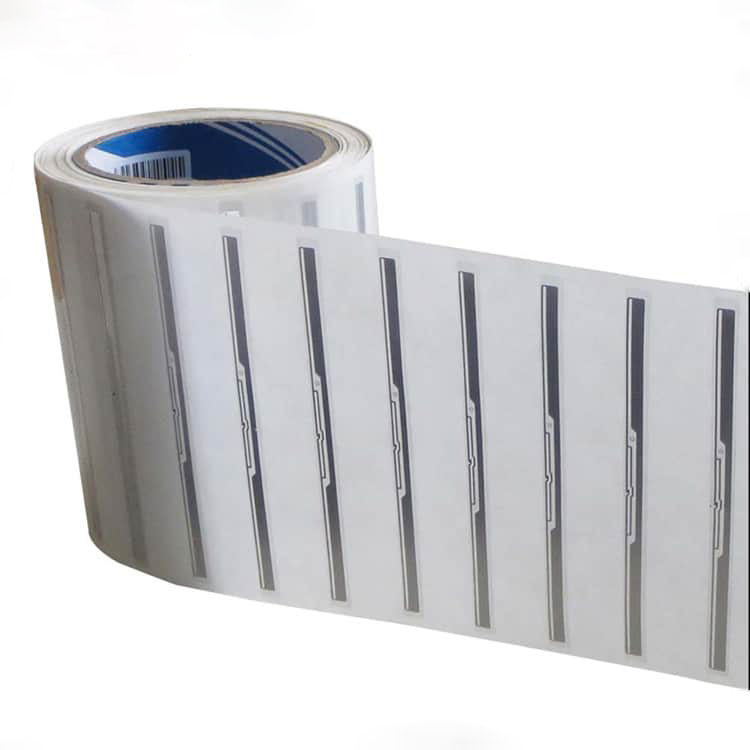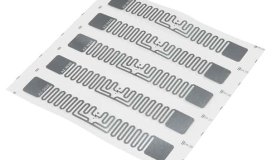Protocols are a certain set of rules that govern the exchange of data through a communication connection. Most widely used protocols define small data exchanges that occur millions of times a day like the Hypertext Transfer Protocol (https) or File Transfer Protocol (FTP). It is fair to say that most people use protocols on a daily basis. Because RFID is built on communication exchange, there are multiple protocols specific to RFID systems. Some higher-level, complex protocols are constructed of component protocols; a common example of that is the EPC Gen2 protocol.
The EPC Gen2 protocol is comprised of other protocols like anti-collision protocols, air interface protocols, and authorization protocols – just to name a few. Each exchange of data must be defined in a protocol in order to not only comply with rules set by the FCC and other regulatory bodies, but also to gain widespread acceptance and usage. Protocols can be created by a company a manufacturer, or a committee, but must be approved by a governing body to be used.

Industry Specific Protocols
Because the popularity of RFID tracking is becoming more widespread, industries as a whole are starting to use RFID and are invested in creating standards and protocols specific to their use cases. They also have broad applications which will foster easier data exchange between diverse entities who do business with each other. Two common examples of this are the ATA protocol created for the transportation industry, and the AAR protocol created for the railway industry.
The ATA protocol was created for the transportation industry; it was set by the American Trucking Association or (ATA) who created a standard to define and set protocols for using RFID in the industry. The ATA protocol defines the way that the communication will take place between tag and reader, while the standard defines items like memory allocation and security methods.
Industries like these create standards and protocols in order to create specifications to work toward universal adoption. This allows users from all across the industry to read RFID tags and find tracking information in the same uniform way, and, in this case, there is the added benefit of cost competition between RFID vendors.
Added Benefit: Ease of use, and Potential Widespread Adoption
TransCore’s eGo & SeGo Protocols
TransCore, an RFID manufacturer that specializes in Automatic Vehicle Identification (AVI) and tolling applications, owns two specific protocols that can provide benefits to automotive applications. eGo and SeGo are two protocols under ISO 18000-6B that are currently used in applications like access control, tolling, and AVI. SeGo – also known as “SuperEgoTM”, differs from eGo in that it has higher tag-to-reader data exchange rates.

Both of these protocols provide advanced security procedures to customers that ensure a tag’s authenticity while preventing data corruption and/or alteration. In addition, tag cloning, spoofing, copying, or duplicating is prevented1. Because vehicles are high-cost assets, these advanced security techniques are valued in AVI applications. In addition, these tags offer 3x the amount of read/write memory than standard RFID tags – up to 2048 bits.
Added Benefit: Advanced Security Measures, and Increased Memory
Wiegand Protocol
The Wiegand Protocol is another example of a custom protocol that can be used for added benefits. Wiegand is built upon the Wiegand effect, discovered by John R. Wiegand, which uses wires and magnetic properties to encode and decode cards. Because this can be used with RFID, and not just magnetic key cards – a protocol was created to describe the communication between tag and reader with Wiegand capabilities. The most common use for a Wiegand system is in electronic access systems to enter gates or buildings.
In order to setup an electronic access system using RFID with doors, locks, and gates, the readers most likely will need to have Wiegand output capabilities. Wiegand output capabilities on RFID readers are similar to GPIO abilities in that they provide information to other Weigand protocol compatible accessories like control systems for gates or magnetic locks for door entry. The RFID tags used in the system will also have to be programmed with Wiegand specific coding.
Added Benefit: Enable Use with Wiegand systems/devices.



